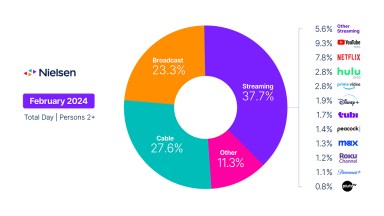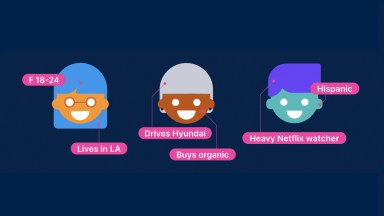
Advertising in the age of Convergent TV
TV is top of mind for many of us as we head into the official Upfronts/NewFronts season. But is there a common understanding of what “watching TV” means anymore?
With every new channel that arises, new screen that gains ubiquity or new micro-generation that ages into the consumer spotlight, our collective grasp on what TV is shifts. The once-crisp lines between linear and streaming have blurred, and it could end up being a best case scenario for everyone. Welcome to the world of Convergent TV.
Everything, Everywhere, All at Once
There’s a phrase I’ve heard kicked around before, most recently at the CIMM East conference, that’s stuck with me: TV isn’t going anywhere, it’s going everywhere.
Is YouTube TV? What about FAST channels, or shows you watch on a phone? Definitions change depending on who you talk to, and I’m starting to wonder if it even matters. For advertisers, the important question—now and forever— is where the audience is. Increasingly, it’s multiple places at once. “Television” is no longer confined to tidy channels and specific screens, it’s all of the above. And this flexibility is creating incredible opportunities.
It also means that broadcasters and publishers aren’t just competing with themselves for audience attention. Now they’re up against the entire digital ecosystem. It’s taken some time, but the industry is starting to catch up with where audiences have already been, which means it can truly start capitalizing on it.
Live TV moments can reach even larger audiences when those audiences have more choice in how they watch them. Imagine what new formats can be created now that users can actively engage with TV ads. And with the introduction of so many new data sources, we’re able to plan and measure well beyond the standard demos to build truly resonant, scalable campaigns.
Of course, all of this requires a reconsideration of the entire campaign process —not just measurement but planning and optimization, too.
The Power of Planning
Lately, marketers have been asking themselves if planning is dead. I don’t think so, but the way many of us were taught to plan probably needs to.
Media plans are developed at the channel level, and even the vendor level, because that’s where the data is. This makes things nearly impossible to scale. Add to that a continuous trend of new, buzzy and sticky platforms forcing marketers to reconsider or even overhaul their plans, yet again. And it’s not just buying that gets upended. The metrics, insights and performance also get caught up in channel-specific siloes and the audience’s actual user experience gets lost in the mix.
This doesn’t negate planning’s importance, it highlights it. Audience behaviors are changing faster than the industry can keep up. Doubling down on planning helps you get ahead of that change and use it to your advantage.
If you plan in silos, your ROI will remain in silos. And any understanding of your campaign’s true impact goes out the window. Optimizing needs to happen constantly and holistically, which means planning is a continuous, cross-media exercise built on reliable data.
Great Decisions Depend on Great Data
Ultimately, success in this new media ecosystem will hinge on data. And not all data is created equally.
As an advertiser, you’re going to stand in front of bosses and stakeholders and say this plan is going to deliver this result. To do so confidently, you have to trust your data. And to get trusted and stable data, I’ve learned that there are two non-negotiables:
Your data must be cross-channel
If you want to scale without losing accuracy, your measurement must work across channels, be resilient against regulatory/privacy concerns, and give you the full, deduplicated picture of your audience and their consumption habits. To pull that off, you need big data sets that are calibrated by panels.
Your data must be independent
Measurement solutions need to be platform and publisher agnostic. That’s the only way they’ll be truly interoperable and able to look across all channels. It’s also how you’ll be able to ensure transparency, accuracy and trust that the decisions you’re making are based on facts.
TV is converging and faster than any of us may have thought possible. To keep up, marketers need to reframe what TV means, double down on continuous planning and optimization, and ensure the data that’s fueling their strategies can scale and adapt without losing accuracy. The change may be big, but the wins will be bigger.
For even more converging media insights, watch our latest video on CTV strategies and what marketers need to know ahead of this year’s Upfronts



